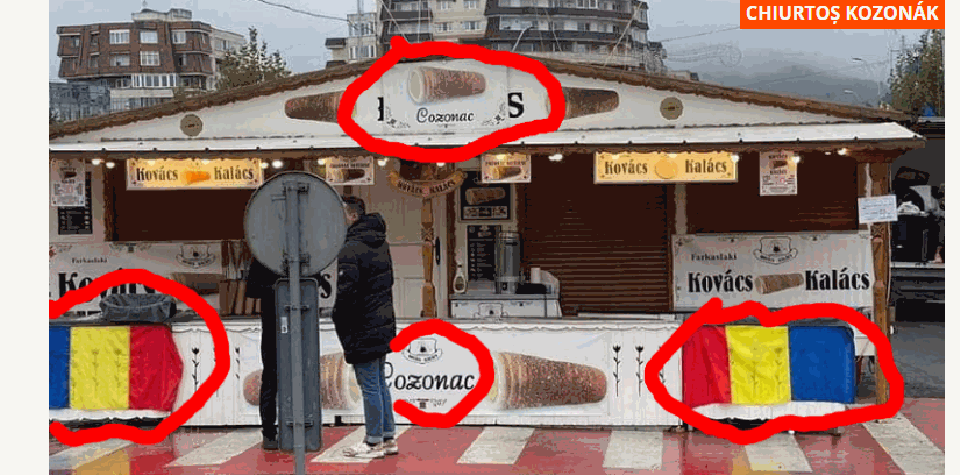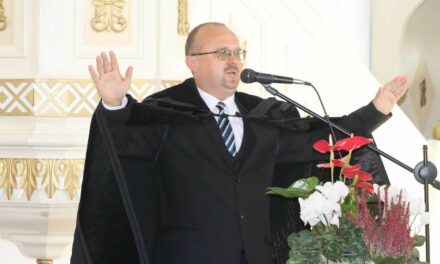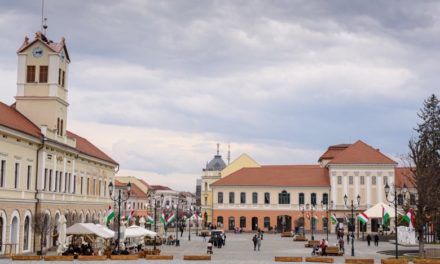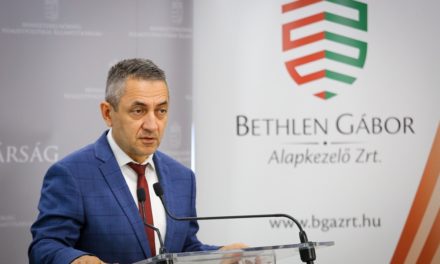The Chestnut Festival in Nagybánya took place between September 23 and 25 this year, that is, it has just ended. But it was not without incident.
Cătălin Cherecheș, the mayor of Nagybánya (whose checkered past here , here and here ) is a person who makes sure with his own eyes that everything is fine on the site. And in front of a stall selling trumpet cakes, his feet were almost rooted to the ground.
Because you could read on the stall that it was trumpet cake.
That's right, in Hungarian. And that's when Master Cherecheș's undivided and indivisible nation-state spirit rose up. This is what he said, let's quote:
"I have a request. (He said a request, but not what followed, but an order - ed.) They will get me a tricolor and put it up nicely."
And the hissing army of servants around him did not say that, Mr. Mayor, this is perhaps an exaggeration, but this: Good! Yes, we got it!
With that, the mayor marched on, followed by his escort. And then the boss had another order:
"And there too. Where we don't understand what it says (understand, we Romanians - ed.) , we put a Romanian tricolor there."
To which the servants again: Yes!
He followed the order, of course, but only in a kind of good-natured Romanian way. The tricolors were not placed on the Hungarian words, but on the front of the stall, on both sides, the word KÜRŐS on the facade was covered with a sign with the inscription COZONAC.
Journalist and human rights activist Adrian Szelmenczi also reacted to the story in a Facebook post. He recalled that during the Cioloș government, when certain racist signs appeared in Bucharest, the ministers of the government cleaned them up with their own hands.
According to Szelmenczi, what should happen in this case too is that every politician with good sense goes to Nagybányár, takes down the flags and apologizes to the érus, who was bullied only because he is Hungarian.
Well, this would be the real Transylvanian multicultural paradise.
But instead, we have what we outlined above: today's myoritic reality.
Cherecheș's measure, as a result of which the Hungarian inscription at the stalls selling kürtős kálács was covered with the Romanian tricolor.
RMDSZ mayor István Zsolt Pap ordered the removal of the flags placed on Thursday on Friday morning. The mayor - once he got into the subject - did not leave the development without reacting. On Friday, he considered it important to emphasize that Nagybánya's name is Baia Mare, even if it is accepted out of courtesy that the name Nagybánya also appears here and there.
"In a town called Baia Mare, if I go to buy bread, where I go to shop it says Pâine and not Bread. If you don't want to change the Bread inscription, then put the Romanian flag next to it! Then I understand that I, the Romanian, can also enter there. But if it is written in Hungarian, it means that it is not for me, for the Romanian. The Romanian, whom some people think should look like a parrot in dictionaries, what other people write in Hungarian means," said Cătălin Cherecheș, the Romanian mayor of the Romanian city of Baia Mare.
For this reason, he continued, since one of his (the mayor's) Hungarian representatives, who is "apparently" the deputy mayor of the city, allowed himself to put his hand on the Romanian flag and remove it, "from this second, I revoke all his deputy mayor mandates".
Following Foter.ro
Author: Jean St'ay
Image: Facebook












